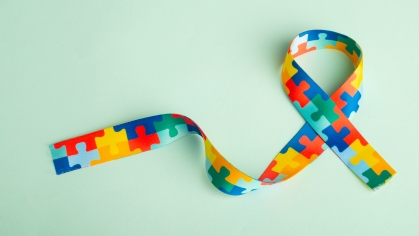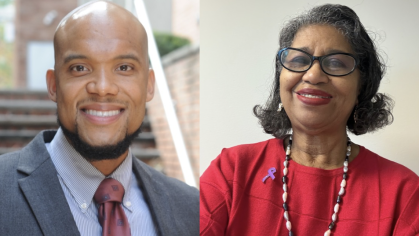April is National Child Abuse Prevention month. Cassandra Simmel,
Associate Professor and Director of the MSW Certificate in Promoting Child and Adolescent Well-Being, shares her thoughts on the importance of observing this month and how people can learn more about this issue.
Can you tell us about your journey to social work?
As an undergraduate student majoring in psychology, I had some excellent internship experiences working with children and adolescents. One position in particular that greatly influenced me involved working in an in-patient psychiatric unit for children at a university-based hospital. In this position I started to see the connection between trauma and children’s mental health, and how trauma was related to child maltreatment, which in turn was frequently related to broader systemic factors such as poverty. I also observed very troubling inequities in mental health treatment for children and their families, based on race, SES, lack of insurance, etc. I then realized that I wanted to understand more about how factors within and across systems are interrelated, and there was (and still is) a need for policy interventions to foster broad, systemic changes for children and youth affected by maltreatment and lack of access to trauma-informed care. Naturally, social work emerged as an ideal fit for me to pursue these interests and goals.
Why is this month important to you to observe?
With April serving as the National Child Abuse Prevention month, it provides an opportunity to evaluate the progress—or lack thereof—that has been made in addressing the prevention of child maltreatment. For example, in recent years a major piece of federal legislation—the Family First Prevention Services Act--was enacted, which reflects a tremendous philosophical shift in child welfare services in that it places a huge emphasis on prevention of child maltreatment and in keeping children with families as much as possible. You can read more about it here. https://familyfirstact.org/about-law
On the other hand, much more progress needs to be made in addressing racial disparities related to child maltreatment as Black and Native American families continue to be disproportionality reported for child maltreatment, and often end up in lengthy involvement with child welfare systems.
What are some ways people can learn more about child abuse prevention?
It is important to recognize that child maltreatment is a worldwide phenomenon and that there are collective global efforts to address and eradicate child maltreatment. For example, the World Health Organization is a strong leader in orchestrating comprehensive prevention efforts, which you can learn about here https://www.who.int/health-topics/violence-against-children#tab=tab_1.
It is further important to recognize that there are multiple overlapping and intersecting causes of child maltreatment, and so it will take a sustained and multi-pronged approach for prevention efforts to be effective. Some of these efforts are being led at the federal level. For more information see https://www.acf.hhs.gov/cb/focus-areas/child-abuse-neglect and https://www.cdc.gov/violenceprevention/childabuseandneglect/index.html
Ultimately, I firmly believe that child maltreatment does not have to exist and that it is preventable.
This story was created in partnership with Rutgers School of Social Work's Inclusion, Intersectionality, Diversity, Equity, and Advancement (IIDEA) Committee in support of our commitment to diversity, equity, and inclusion.



